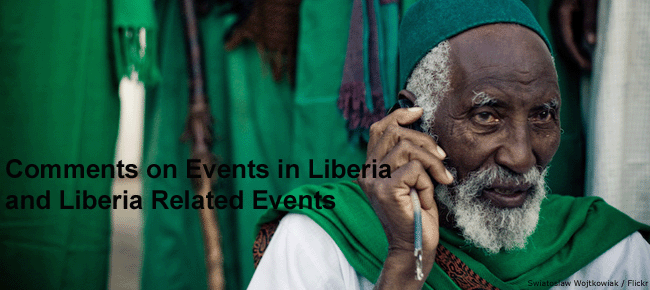Tuesday, April 14
From the ‘rice riots’ to the Special Court for Sierra Leone
Thirty years ago the ‘rice riots’ were the beginning of the end of the Administration of President William Tolbert (1971 – 80). April 14, 1979 - ‘The day Monrovia stood still’, as described by the late Albert Porte, one of Liberia's most independent and prolific writers. A people’s protest against the increase in the price of rice resulted in police firing at demonstrators, killing hundreds maybe more than one thousand Liberians whose only fault it was to no longer accept the one-party rule of the True Whig Party, the political machinery of the Americo-Liberian elite. The ‘rice riots’ announced in a very violent way the end of an era of political stability which, it should be reckognized, was only made possible through the oppression of the majority of the Liberian people by a very small minority, not exceeding five percent of the total population.
Liberia underwent more changes in the thirty years that have passed since that day, April 14, 1979, than in the 150 years preceding it, one is inclined to say. A quarter of a million Liberians dead, many more wounded or traumatized, the modern economy in shambles, infrastructure destroyed, foreign investors chased away. Among the living persons bearing responsibility for most, if not all, destruction, killings, atrocities, cruelties is notably Charles Ghankay Taylor – first as leader of the National Patriotic Front of Liberia (NPFL), later as president of Liberia.
As I also mentioned in last week’s postings, Charles Taylor is standing before his judges in The Hague, the Netherlands, not because of his role in the civil war in Liberia, but he is being held responsible for his participation in or fueling of the conflict in neighbouring Sierra Leone.
On Thursday (April 9), Special Court for Sierra Leone Prosecution counsel Ms Brenda Hollis made her oral response to the defense submission of no answer (see my April 6 posting). I was very impressed by Ms Hollis, who inevitably repeated a number of the atrocities committed by RUF and AFRC fighters, aided by Charles Taylor as she more than once explained. Interested readers are referred to a detailed account of Ms Hollis’response as published by the webmaster of the Charles Taylor Trial site (‘International Criminal Justice in the Making’).
After Ms Hollis had concluded her submission and the defense counsel Mr Morris Anyah had said that he had no further response, the presiding judge, Ruchard Lussick informed prosecution, defense and the public that a decision on the Motion for Judgement of Acquittal/Submission of No Case to Answer will be rendered on May 4, 2009.
Hence, the Court will resume on May 4, 2009.
2009/04/14
Subscribe to:
Post Comments (Atom)


1 comment:
I was there that day (April 14th, 1979). My Peace Corps job with the Lofa County Rural Health Project required that I make a fuel run to Monrovia once per month. I stopped by to see my friend Gus Waters (UNDP) when the protest started. Several of us volunteers walked into town to mingle with the protestors. I saw many of the Liberian Peace Corps Trainers (paid staff) at the protest. When things got bad (and they did get very bad) we loaded up as many PCV's as we could in my truck and headed for Cape Mount where we ended up trapped for over a month on orders of the Ambassador. We were robbed at gunpoint by drunk soldiers daily and contemplated an escape across the border to Sierra Leone at Bo when the Embassy arranged for us to leave Liberia. This is but a small retell of a very great ordeal.
bobodukor@yahoo.com
Post a Comment